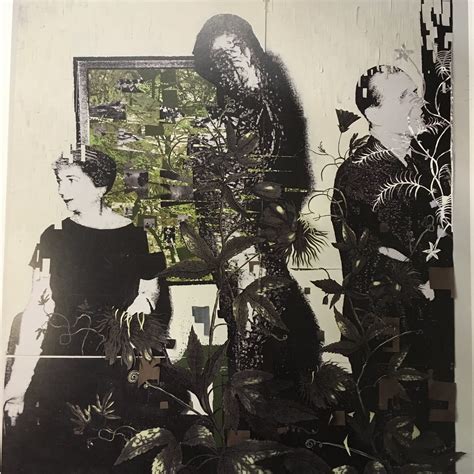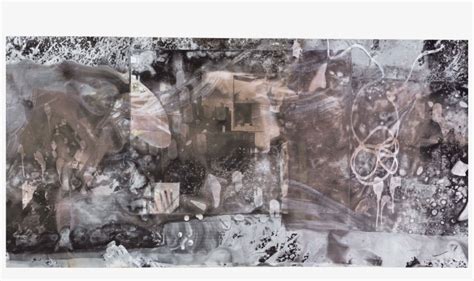In the ever-evolving landscape of modern art museums, technology plays a transformative role, enhancing both visitor experiences and operational efficiency. From immersive digital exhibits and interactive displays to cutting-edge virtual reality (VR) and augmented reality (AR) experiences, technology is reshaping how art is presented and appreciated. Artificial intelligence (AI) is revolutionizing curation and engagement, while mobile apps and personalized guides offer tailored interactions. Interactive kiosks, online collections, and virtual tours expand access beyond physical walls. Integrating social media and digital storytelling further connects museums with global audiences. As sustainability and smart technologies become integral to museum design, exploring these innovations reveals exciting possibilities for the future of art and technology.
inxos.xyz offers a detailed exploration of this topic.
1. Introduction to the role of technology in modern art museums
In the contemporary art museum landscape, technology has become an indispensable tool, redefining how art is experienced and interpreted. Museums are increasingly integrating advanced technologies to enhance visitor engagement and streamline operations. This shift not only modernizes the presentation of artworks but also makes art more accessible to diverse audiences. Digital innovations have transformed traditional museum settings into dynamic environments where interactive displays and digital exhibits bring art to life. Virtual reality (VR) and augmented reality (AR) offer immersive experiences, allowing visitors to explore art in novel ways that transcend physical limitations. Artificial intelligence (AI) is now playing a crucial role in curating exhibitions and personalizing visitor interactions, providing tailored recommendations and insights. Additionally, mobile apps and interactive kiosks are revolutionizing the way visitors navigate and engage with exhibits, offering customized information and interactive experiences. As museums adopt these technologies, they not only enhance their educational and cultural missions but also address contemporary challenges such as accessibility and visitor engagement. This technological evolution underscores a broader trend of blending art with digital innovation, promising an exciting future for the art museum sector.

2. Digital exhibits and interactive displays
Digital exhibits and interactive displays have revolutionized the traditional museum experience, offering visitors a more engaging and dynamic way to interact with art. Unlike static displays, these innovations allow for a multi-dimensional exploration of artworks. Digital exhibits often feature high-resolution screens that present art in vivid detail, sometimes with added layers of information such as artist interviews, historical context, or multimedia content. Interactive displays further enhance this experience by inviting visitors to touch, manipulate, or otherwise interact with the artwork. This interaction can range from simple gestures to complex tasks like creating digital art themselves or altering existing pieces in real-time.
These technologies not only make art more accessible but also cater to a variety of learning styles and interests. For instance, touchscreens might provide deeper insights into specific elements of a painting, while motion sensors can trigger additional content based on the visitor’s movements. By integrating these interactive elements, museums create a more immersive environment that encourages exploration and personal connection with the art. This shift from passive observation to active participation enhances the overall visitor experience, making art more engaging and educational.

3. Virtual reality (VR) and augmented reality (AR) experiences
Virtual reality (VR) and augmented reality (AR) are transforming art museum experiences by offering immersive and interactive encounters with art. VR creates fully virtual environments where visitors can explore art installations from new perspectives or even step inside virtual recreations of famous artworks. This technology allows users to experience art beyond physical constraints, providing a sense of presence and engagement that traditional displays cannot match.
AR, on the other hand, overlays digital information onto the physical world through devices like smartphones or AR glasses. In museums, AR can bring static exhibits to life by adding interactive elements, such as animated content or additional layers of information that enhance understanding and context. For example, scanning an artwork with an AR app might reveal hidden details or provide a historical narrative.
Both VR and AR not only make art more accessible but also offer novel ways to engage with and interpret works, enhancing the educational an

4. Use of artificial intelligence (AI) in curation and visitor engagement
Artificial intelligence (AI) is increasingly integral to modern art museums, revolutionizing both curation and visitor engagement. AI-powered systems are used to analyze vast amounts of data from artworks, visitor interactions, and historical records to assist curators in designing exhibitions. By examining patterns and trends, AI can help identify thematic connections and suggest new ways to present art, ensuring that exhibitions are both innovative and relevant.
In terms of visitor engagement, AI enhances personalized experiences through smart recommendations and tailored content. For instance, AI algorithms can analyze a visitor’s preferences and past interactions to offer customized exhibition suggestions, interactive elements, or educational content. Chatbots and virtual assistants, powered by AI, provide real-time answers to visitor queries, enhancing the overall museum experience.
AI also aids in creating dynamic, responsive environments where exhibits can adapt based on visitor behavior. This technology not only streamlines curatorial processes but also fosters a deeper connection between visitors and art, making each museum visit unique and engaging.
5. Mobile apps and personalized museum guides
Mobile apps and personalized museum guides are revolutionizing how visitors interact with art museums, offering customized and enhanced experiences. Modern museum apps serve as digital companions, providing a wealth of information at visitors’ fingertips. These apps often include features such as interactive maps, detailed exhibit information, and multimedia content that enriches the viewing experience. Through these platforms, visitors can access audio guides, video tours, and behind-the-scenes content, which adds depth to their understanding of the artworks.
Personalized museum guides take this a step further by tailoring content to individual interests and preferences. Using data from visitor interactions and preferences, these guides can suggest specific exhibits, artworks, or educational content that align with the user’s interests. This level of personalization enhances engagement by making each visit more relevant and meaningful.
Additionally, mobile apps can facilitate real-time interactions, such as sending notifications about upcoming tours or events, and providing interactive features like virtual scavenger hunts or gamified experiences. By integrating these technologies, museums create a more immersive and interactive environment that adapts to the needs and interests of each visitor. This personalized approach not only enhances the overall museum experience but also encourages deeper
6. Interactive kiosks and touchscreens
Interactive kiosks and touchscreens are key elements in modern art museums, transforming static displays into engaging, hands-on experiences. These technologies allow visitors to interact directly with the content, providing a deeper understanding of the artworks and exhibits. Interactive kiosks often feature large touchscreens where visitors can explore detailed information about specific pieces, including artist biographies, historical context, and related multimedia content. These kiosks might also include interactive features such as quizzes, games, or virtual exhibitions that enhance learning and engagement.
Touchscreens embedded within exhibits offer a more integrated approach, allowing visitors to interact with digital content seamlessly. For example, touchscreens might display high-resolution images of artwork, provide zoom functions, or reveal hidden details that are not visible to the naked eye. They can also offer contextual information and interpretive content that enriches the visitor’s experience.
These interactive elements not only make art more accessible but also cater to diverse learning styles, allowing for a personalized and immersive museum visit. By incorporating interactive kiosks and touchscreens, museums enhance visitor engagement, making the art experience more dynamic, informative, and interactive.
7. Online collections and virtual tours
Online collections and virtual tours have significantly expanded the reach and accessibility of art museums. Online collections enable museums to digitize their artworks and make them available to a global audience, allowing people to explore and appreciate art from anywhere in the world. These digital archives often include high-resolution images, detailed descriptions, and scholarly information, providing a comprehensive view of the museum’s holdings.
Virtual tours take this a step further by offering immersive online experiences that replicate the physical museum environment. Through 360-degree views and interactive elements, visitors can navigate galleries, explore exhibits, and view artworks as if they were there in person. These tours can be enhanced with additional features like audio guides, educational content, and interactive hotspots, making it possible for users to engage with art in a dynamic and informative way. Together, online collections and virtual tours democratize access to art and enrich the overall museum experience.
8. Integration of social media and digital storytelling
The integration of social media and digital storytelling has become a pivotal strategy for art museums to engage with audiences and amplify their reach. Museums leverage platforms like Instagram, Facebook, and Twitter to share compelling narratives about their collections and exhibitions, creating a virtual presence that extends beyond physical walls. Through visually captivating posts, stories, and videos, museums can highlight key artworks, share behind-the-scenes content, and provide updates on upcoming events.
Digital storytelling enhances this engagement by weaving interactive and multimedia elements into museum content. For example, museums might create immersive videos or interactive infographics that offer deeper insights into an artist’s process or an exhibit’s theme. This storytelling approach not only educates but also creates emotional connections with the audience, encouraging them to share their experiences and spread the word about the museum.
Social media platforms also facilitate real-time interactions, allowing visitors to share their own experiences, participate in online discussions, and contribute to community engagement. By integrating these digital tools, museums build vibrant online communities, foster greater public interest, and attract a diverse audience, making art more accessible and relatable in the digital age.
9. Sustainability and smart building technologies in museums
Sustainability and smart building technologies are increasingly integral to modern art museums, reflecting a commitment to environmental responsibility and operational efficiency. Museums are adopting energy-efficient systems, such as LED lighting and climate control, to reduce their carbon footprint and manage energy consumption effectively. Smart building technologies, including automated lighting and HVAC systems, help optimize energy use and maintain ideal conditions for preserving artworks.
Additionally, sustainable practices are being incorporated into the design and construction of museum facilities, with features like green roofs, rainwater harvesting, and eco-friendly materials. These innovations not only support environmental stewardship but also enhance the museum’s role as a leader in sustainability.
By integrating these technologies, museums not only contribute to global sustainability efforts but also create more efficient, cost-effective operations. This commitment to green practices aligns with broader cultural trends, making museums more relevant and responsible in the modern world.
10. Future trends and potential technological advan
Looking ahead, the intersection of technology and art museums promises exciting innovations and advancements. Future trends are likely to include more sophisticated uses of artificial intelligence and machine learning to enhance curation and visitor personalization. AI could enable even more precise recommendations and deeper analysis of art, offering insights and interactive experiences that evolve with visitor preferences.
Advancements in virtual reality (VR) and augmented reality (AR) will continue to push the boundaries of immersive experiences, potentially integrating haptic feedback and advanced sensory inputs to create even more engaging virtual environments. Additionally, developments in blockchain technology might offer new ways to authenticate and track artworks, ensuring provenance and ownership are transparent and secure.
The integration of the Internet of Things (IoT) could further enhance museum operations by enabling real-time monitoring and adaptive environments that respond dynamically to visitor interactions and environmental conditions. As museums continue to explore these emerging technologies, they will likely offer increasingly interactive, personalized, and sustainable experiences, shaping the future of how art is experienced and appreciated globally.
Technology is profoundly transforming art museums, enhancing engagement, accessibility, and sustainability. From interactive displays and AI-driven curation to virtual reality experiences and smart building innovations, these advancements are reshaping how art is presented and experienced. As museums continue to embrace these technologies, they promise to offer increasingly immersive and personalized art experiences for audiences worldwide.
inxos.xyz
